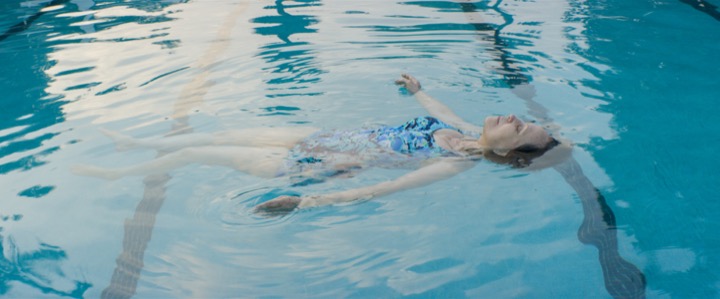Experiencing a great film lasts much longer than the 120 minutes you spend in the theater. After “Get Out”, my mind began whirring to figure out all the telltale signs leading up to the big twist. “Todo lo demás (Everything Else)” took the opposite approach with an understated, methodical narrative that remained stuck in my head for days.
“Todo lo demás” is the first fictional film from director Natalia Almada, but she brought her documentarian’s sensibility to the project nonetheless. Nearly all the cast members are not professional actors, with the exception of Adriana Barraza from “Amores perros” and “Babel”. The viewer follows the life of Doña Flor, a low-level bureaucrat in a Mexican government office. The camera meticulously documents her unfaltering daily routine: putting on her stockings, taking the subway to work, bearing the gratitude and frustration of citizens she serves, dressing and undressing at the municipal pool locker room, and feeding her cat. The plot defers to these repetitive rituals, with a handful incidents that interrupt her life’s monotony.
The film’s subtle variations ultimately supply the story arc, most notably as Doña Flor gets closer and closer to overcoming her fear of swimming in the pool. The threat of violent crime also creates a subtle suspense. Even these climactic moments fall short of the violence or catharsis the actions hint at. The viewer is left to contemplate the repressed emotions and brutal violence that take place outside of the camera’s frame.

I want to a focus on two elements that defined the film: background sounds and long stationary frames.
The vast majority of the film’s activity occurs outside the camera’s view, so the audience experiences it through sound – whether from the splashes of swimmers at the pool or the news anchor relaying the latest crime statistics. As a result, the viewer pieces together a rich layer of implied or expected activity expands beyond the events on screen. On one hand, the incongruity between the pregnant outer world and Doña Flor’s uneventful routine highlights her solitude. At a subtler level, this indirect way of experiencing the character’s world created a shimmering haze of a mood that stuck with me long after I left the theater.
I was lucky enough to see “Todo lo demás” in the theater at the San Francisco Museum of Modern Art, which has an amazing sound system. In her talk after the movie, Almada said she specifically told her friends to see the film at that showing for this reason.
The long cuts, whether of Doña Flor’s feet as she gets dressed or her hunched over back in the pool locker room, set the movie’s languid tempo. As revealed in the director Q&A, long cuts are fundamental to Almada’s storytelling. “The audience notices different things the longer you hold a shot,” Almada said. “First, they might notice the lady in the red dress. Next they will notice a car driving by, and then something else in the background. If you hold a shot for long enough, the audience member starts to create their own layer of meaning.” “Todo lo demás” leaves a canvas for the viewer to create their own connections and suspense.
Admittedly I felt slightly underwhelmed when the final scene cut, but as the credits rolled I continued to turn over the images in my mind. The movie created resonant images and then left the viewer to make connections and assemble a trajectory. The end result was a world that remained vivid in my mind without any heavy-handed plot twists – just masterful filmmaking.
